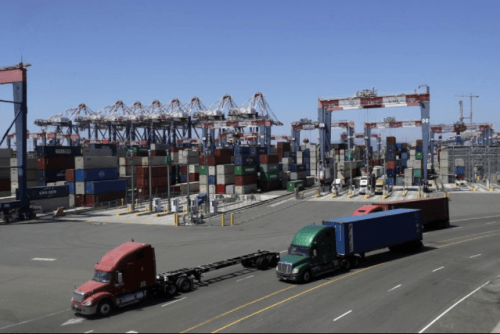Imports at major U.S. retail container ports are expected to see a sharper-than-usual drop this month amid the ravaging coronavirus disease (covid-19) causing longer Lunar New Year shutdowns of factories in China, the Global Port Tracker report released by the U.S. National Retail Federation and Hackett Associates shows.
“February is historically a slow month for imports because of Lunar New Year and the lull between retailers’ holiday season and summer, but this is an unusual situation,” NRF Vice President for Supply Chain and Customs Policy Jonathan Gold said.
“Many Chinese factories have already stayed closed longer than usual, and we don’t know how soon they will reopen. U.S. retailers were already beginning to shift some sourcing to other countries because of the trade war, but if shutdowns continue, we could see an impact on supply chains.”
“Projecting container volume for the next year has become even more challenging with the outbreak of the coronavirus in China and its spread,” Hackett Associates Founder Ben Hackett said.
“It’s questionable how soon manufacturing will return to normal, and following the extension of the Lunar New Year break all eyes are on what further decisions China will make to control the outbreak.”
The report shows that U.S. ports covered by Global Port Tracker handled 1.72 million Twenty-Foot Equivalent Units in December 2019, the latest month for which after-the-fact numbers are available. That was up 1.8 percent from November but down 12.4 percent from unusually high numbers at the end of 2018 ahead of a scheduled tariff increase that was ultimately postponed.
December’s numbers brought 2019 to a total of 21.6 million TEU, a 0.8 percent decrease from 2018 amid the ongoing trade war but still the second-highest year on record. Imports during 2018 hit a record of 21.8 million TEU, partly due to frontloading ahead of anticipated 2019 tariffs.
January was estimated at 1.82 million TEU, down 3.8 percent from January 2019. February is forecast to be down 12.9 percent year-over-year at 1.41 million TEU and March is expected to down 9.5 percent year-over-year at 1.46 million TEU. Before the covid-19 outbreak, Global Port Tracker had forecast February at 1.54 million TEU and March at 1.7 million TEU.
While the duration of the virus impact remains unknown, April is currently forecast at 1.82 million TEU, up 4.5 percent year-over-year; May at 2 million TEU, up 8.3 percent, and June at 1.95 million TEU, up 8.5 percent, NRF said. Those numbers would bring the first half of 2020 to 10.47 million TEU, down 0.4 percent year-over-year.
Furthermore, covid-19 outbreak has put to question China’s ability to meet its pledge from the US-China “Phase One” trade agreement signed on January 15. As reported earlier, China committed to buy an additional USD 200 billion of US goods over a two-year period, of which a lot of energy and agricultural products were supposed to be seaborne.
“It remains questionable whether these purchases, will ever see the light of the day, and the virus outbreak could prove to be an additional hindrance to this Chinese pledge. White House economic adviser Larry Kudlow has said that the “export boom” of US commodities will be delayed as a result of the virus,” Peter Sand, BIMCO’s Chief Shipping Analyst said commenting on the situation.
Based on the latest information from the World Health Organization (WHO), there are a total of 40, 554 confirmed cases of coronavirus infections across the globe, with the majority (40, 235) recorded in China.
The death toll has risen to 909 people, with only one death registered outside China, i.e., in the Philippines.

